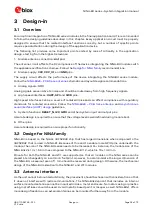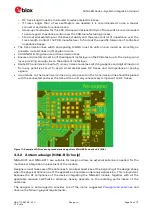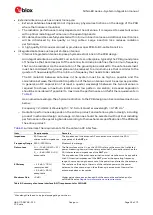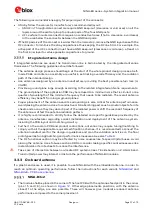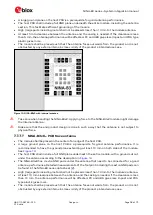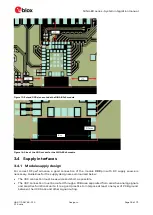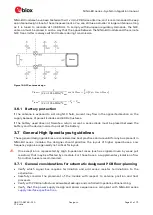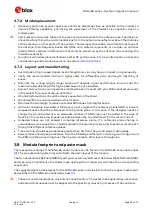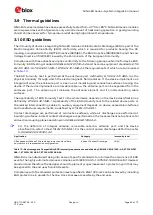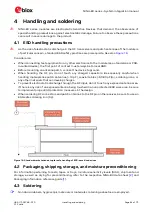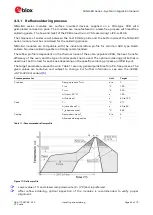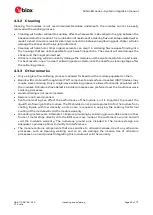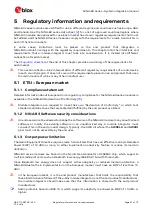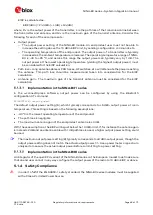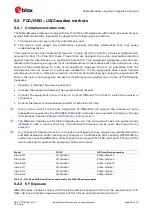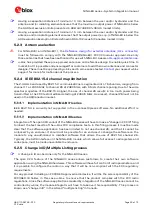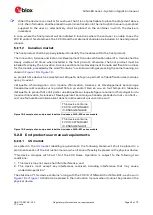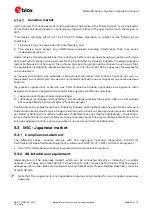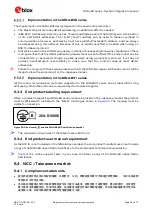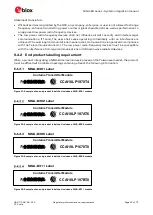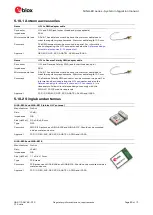
NINA-B3 series - System integration manual
UBX-17056748 - R13
Handling and soldering
Page 46 of 72
C1-Public
4.3.2
Cleaning
Cleaning the modules is not recommended. Residues underneath the modules cannot be easily
removed with a washing process.
•
Cleaning with water will lead to capillary effects where water is absorbed in the gap between the
baseboard and the module. The combination of residues of soldering flux and encapsulated water
leads to short circuits or resistor-like interconnections between neighboring pads. Water will also
damage the sticker and the ink-jet printed text.
•
Cleaning with alcohol or other organic solvents can result in soldering flux residues flooding into
the housings that are not accessible for post-wash inspections. The solvent will also damage the
sticker and the ink-jet printed text.
•
Ultrasonic cleaning will permanently damage the module and the crystal oscillators in particular.
For best results, use a "no clean" soldering paste and eliminate the need for a cleaning stage after
the soldering process.
4.3.3
Other remarks
•
Only a single reflow soldering process is allowed for boards with a module populated on them.
•
Boards with combined through-hole (THT) components and surface-mounted (SMT) devices may
require wave soldering. Only a single-wave soldering process is allowed for boards populated with
the modules. Miniature Wave Selective Solder processes are preferred over the traditional wave
soldering processes.
•
Hand soldering is not recommended.
•
Rework is not recommended.
•
Conformal coating can affect the performance of the module, so it is important to prevent the
liquid from flowing into the module. The RF shields do not provide protection for the module from
coating liquids with low viscosity, and so care is required in applying the coating. Conformal
coating of the module will void the module warranty.
•
Grounding metal covers: Attempts to improve grounding by soldering ground cables, wick or other
forms of metal strips directly onto the EMI covers are made at the customer's own risk and will
void the module’s warranty. The numerous ground pins included in the module design are
adequate to provide optimal immunity to interferences.
•
The module contains components that are sensitive to ultrasonic waves. Use of any ultrasonic
processes, such as cleaning, welding, and so on, can damage the module. Use of ultrasonic
processes on an end product integrating this module will void the warranty.

